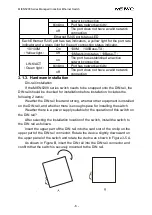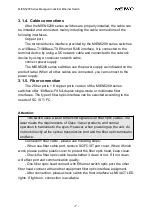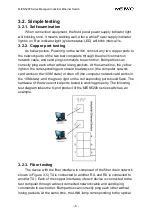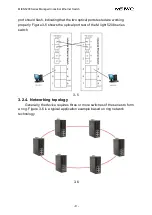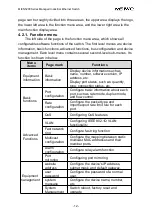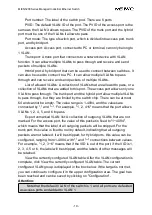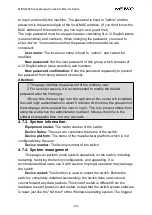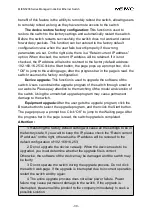
MIEN5208 Series Managed Industrial Ethernet Switch
- 18 -
Technology) standard. In essence, it provides a mechanism for performing
QoS at the Layer 2 MAC (Media Access Control) layer. The VLAN tag has two
parts: VLAN ID (12 bits) and priority (3 bits). The priority field is not defined and
used in the IEEE 802.1Q VLAN standard, and is defined in 802.1P, so the
IEEE802.1P priority has 8 classification levels (3 bits) available.
Priority 0 is the default and is automatically enabled if no other priority
values are set. The device default priority 0 and priority 1 are mapped to the
first queue, which is the queue with the lowest priority. Priority 2 and priority 3
are mapped to the second queue, priority 4 and priority 5 are mapped to the
third queue, and priority 6 and priority 7 are mapped to the highest priority
queue, that is, the fastest forwarding queue.
Attention:
1.There are only four forwarding priority queues in the switch. Therefore,
although 802.1P has eight priority levels, it must be implemented through the
switch. Therefore, multiple priorities of 802.1P in the default setting will be in
the same forwarding queue. Packets in the same forwarding queue have the
same priority on the real "hardware" level, regardless of whether they may be
set to different priorities at the software level.
2. The absolute priority is to process the data of the fastest priority
queue before processing the data of the lower priority queue, and finally the
data of the lowest priority queue; the relative priority is the most processed.
At the same time as the fast priority queue data, the data in the low priority
queue will be processed. The ratio of the forwarding of the four queues is
from 8:4:2:1.
3. When both priorities are enabled at the same time, the priority ranking
is: 802.1P > Port;802.1P is an extension of 802.1Q. The priority identifier is
stored in the VLAN tag. Therefore, it is valid only for 802.1Q VLAN packets.
4.6.2. VLAN
VLAN (Virtual Local Area Network) refers to virtual local area network
technology. VLAN is an effective means of network management, and can
effectively suppress the occurrence of broadcast storms. The MIEN5208 series
of managed industrial Ethernet switches support IEEE 802.1Q VLANs.
Virtual LAN can be divided across multiple switches through the
IEEE802.1Q protocol. The switch supports the standard IEEE802.1Q protocol,
is compatible with other switches that support the IEEE802.1Q protocol
standard, and also supports 802.1Q tag modification. It can connect devices
that can identify 802.1Q tags or cannot identify 802.1Q tags. It is very
convenient to use this series of switches to configure IEEE802.1Q VLAN.



